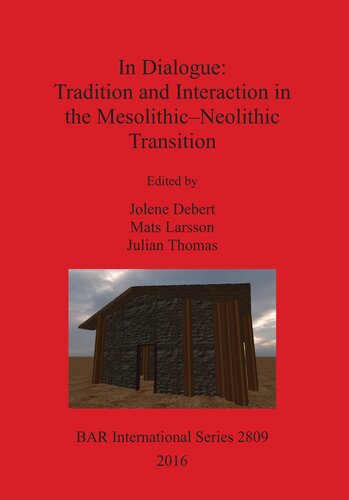

Most ebook files are in PDF format, so you can easily read them using various software such as Foxit Reader or directly on the Google Chrome browser.
Some ebook files are released by publishers in other formats such as .awz, .mobi, .epub, .fb2, etc. You may need to install specific software to read these formats on mobile/PC, such as Calibre.
Please read the tutorial at this link: https://ebookbell.com/faq
We offer FREE conversion to the popular formats you request; however, this may take some time. Therefore, right after payment, please email us, and we will try to provide the service as quickly as possible.
For some exceptional file formats or broken links (if any), please refrain from opening any disputes. Instead, email us first, and we will try to assist within a maximum of 6 hours.
EbookBell Team

4.1
60 reviewsThis book developed from discussions following the 2012 In Dialogue: Tradition and Interaction in the Mesolithic–Neolithic Transition conference held in Manchester, UK. This conference provided a forum to compare not only the processes through which material innovations were adopted and elaborated during the Early Neolithic, but also the ways in which these processes have been understood and represented within the respective archaeological research traditions. The book examines the developments that followed the introduction of farming into Britain and Southern Scandinavia (Denmark and Southern Sweden). Contributors to the volume discuss the idiosyncratic social and cultural patterns that emerged at this pivotal period. An overarching narrative is woven by scholars from both regions who seamlessly integrate material culture, dwelling practices, controversial theory and ritual activities into a detailed image of the changing world of the early Neolithic in North-West Europe. Through a theoretically informed approach, the relationship between material culture, subsistence regimes, monumentality, ceremonial activity and social relations is explored. The process in which people became 'Neolithic' is complex and required changes not just in subsistence but in every facet of their lives; this is what this book wishes to investigate. By leaving the traditional colonization and adoption debate for a more nuanced approached, an intricate cultural tapestry can be woven. From their organisation of the landscape to their place in the world, things were fundamentally altered: this is where the authors of this book focus their attention. This is a regionally focused, theoretically and methodologically complementary set of papers by specialists who offer a comprehensive and authoritative overview of different aspects of this fundamental transition.